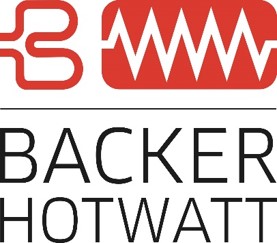What to Know Early in Your Heater Design Phase
In applications where precise temperature control is critical, understanding heat loss is essential for designing effective heating systems. Determining how much heat you will need takes into consideration heat loss and requires specifying the exact wattage needed to ensure the heater you select works optimally for your application.
Whether you’re working with process air heaters or immersion heaters, knowing how to determine the required heat output can ensure optimal performance and efficiency.
Understanding Heat Loss
Heat loss refers to the amount of thermal energy that escapes from a system, often due to factors such as insulation inefficiency or environmental conditions. When designing a product, it’s important to understand the factors affecting heat loss. Taking these factors into account enables you to more accurately calculate the insulation and power needed, address any inefficiencies, and reduce heat loss for optimal heating performance.
Calculating Heat Loss
Process air heaters are commonly used in applications to heat air for various processes, such as drying, curing, or sterilization. When designing a process air heater, several factors must be considered, including the desired temperature range, airflow rate, and heat loss through ducts or insulation.
Insulation materials and installation methods play a critical role in minimizing heat loss and optimizing energy efficiency. Graphs 1 and 2 illustrate heat loss for uninsulated metal surfaces and through insulated walls.


Immersion heaters are submerged directly into liquids or gases to provide localized heating in a variety of applications. Key factors to consider when specifying an immersion heater include the heater’s material compatibility with the process fluid, its physical dimensions and configuration, and any special features required for safety or performance optimization. 
Proper installation and maintenance are also essential for ensuring the longevity and efficiency of immersion heaters, as improper operation can lead to issues such as overheating or corrosion.
Graphs 3, 4, and 5 illustrate heat loss for open hot water tanks, molten metal surfaces, and oil bath surfaces.



Heating Solutions Designed for Optimal Performance and Efficiency
Backer Hotwatt can help you design an effective process air or immersion heating system that will minimize heat loss, optimize heat transfer, and ensure effective, precise performance. As an industry leader dedicated to the design and manufacture of resistive heating elements for OEMs, we know how to help you achieve your objectives. By collaborating early in the design process, we will help you develop an efficient heating system that best suits your application needs.
How can we help you with your next heating project? Download the Guide for Heat Losses resource here! Contact an engineer today to set up an exploration consultation. We look forward to helping you soon.
Hyperlink once LP and form is created.
